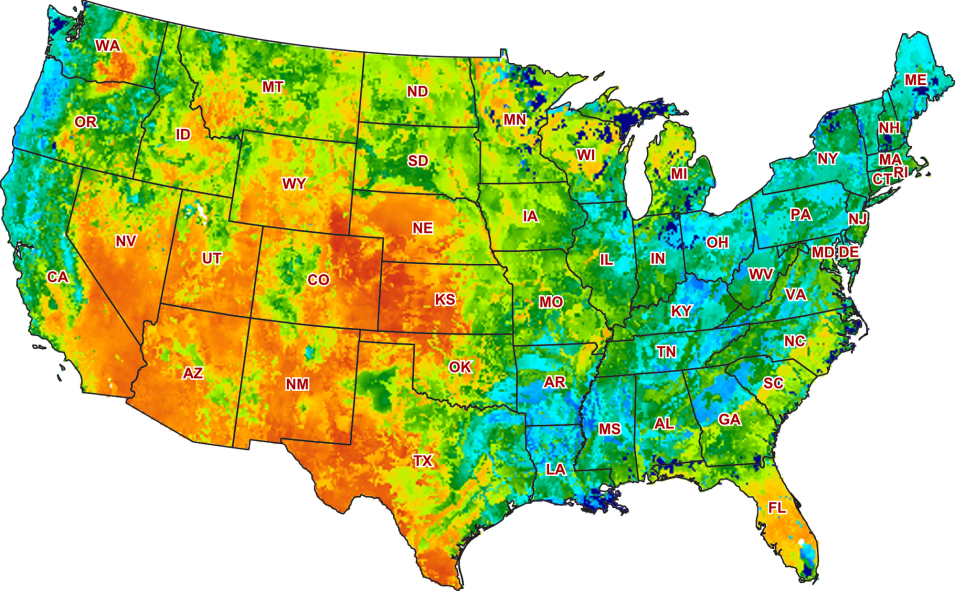WLDAS was developed at NASA's Goddard Space Flight Center in Greenbelt, MD, with WWAO funding. The system provides Western U.S. water managers and stakeholders with a long-term record of near-surface hydrology for use in drought assessment and water resources planning. The system uses meteorological observations including precipitation, incoming shortwave and longwave radiation, near surface air temperature, humidity, wind speed, and surface pressure along with parameters such as vegetation class, soil texture, and elevation as inputs to a model that simulates land surface energy and water budget processes. Outputs of the model include soil moisture, snow depth and snow water equivalent, evapotranspiration, and soil temperature, as well as derived quantities such as groundwater recharge and anomalies of the state variables.
DSET is a WWAO project co-developed with the Navajo Nation Department of Water Resources. The cloud-based application improves drought reporting and management across the vast expanse of the Navajo Nation, which covers more than 70,000 km2 (27,000 square miles) in northern Arizona, southern Utah, and northern New Mexico. DSET drought reports combine satellite data (including GPM and Tropical Rainfall Measuring Mission [TRMM] data), modeled inputs, and in-situ data. DSET is a partnership of NASA-WWAO, the Navajo Nation Department of Water Resources, the Desert Research Institute, and Climate Engine.
Granger observes that the funding process used by WWAO increases her team's ability to respond rapidly to meeting identified hydrologic needs and working with water managers.
"We were tasked to innovate our program processes and one of the ways we do that is through our solicitation process," Granger says. "We publish a RFI [Request for Information] based on our Needs Assessments, and responses to the RFI are then reviewed for technical merit, relevance to WWAO, and these assessments. Funded projects run the gamut. They can be somewhat complex, but sometimes all that's needed is [support] to help get data into the right format such that it can be used in a model."
Looking Ahead to New Data and New Relationships
Along with SWOT, PACE, and NISAR, the WWAO team is looking forward to working with data from several upcoming Earth observation missions. Granger points to the GRACE-Continuity (GRACE-C), NASA's Surface Biology and Geology (SBG), and NASA's Atmosphere Observing System (AOS) missions as ones having potential application for the Western water community. "It's part of our mission to really understand what these new missions are and to articulate the benefit of new and upcoming missions to our community," she says. "Some of the groups and teams we work with are already early adopters of these missions."
In the end, Granger knows that the work of the WWAO boils down to relationships. Not just having the unrestricted Earth observation data and the tools for using these data, but also a seat at the discussion table to work with Western water decision makers to use these resources.
"Relationships are important. We meet [water managers] where they are and we work hard to develop and establish long-term relationships that are based on trust. And that opens some doors," Granger says. "These relationships are key and critical for WWAO and important for NASA, as well."


